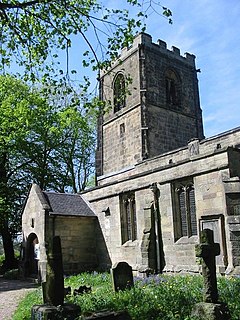Related Research Articles

Sir George Gilbert Scott, known as Sir Gilbert Scott, was a prolific English Gothic revival architect, chiefly associated with the design, building and renovation of churches and cathedrals, although he started his career as a leading designer of workhouses. Over 800 buildings were designed or altered by him.

Pentonville Road is a road in Central London that runs west to east from Kings Cross to City Road at The Angel, Islington. The road is part of the London Inner Ring Road and part of the boundary of the London congestion charge zone.

Philip Hardwick was an English architect, particularly associated with railway stations and warehouses in London and elsewhere. Hardwick is probably best known for London's demolished Euston Arch and its twin station, the original Birmingham Curzon Street, which stands today as the oldest railway terminus building in the world.

Alexander Cumming FRSE was a Scottish watchmaker and instrument inventor, who was the first to patent a design of the flush toilet in 1775, which had been pioneered by Sir John Harrington, but without solving the problem of foul smells. As well as improving the flush mechanism, Cummings included an S-trap to retain water permanently within the waste pipe, thus preventing sewer gases from entering buildings. Most modern flush toilets still include a similar trap.

St Mary's Church is in West Derby, a suburb of Liverpool, Merseyside, England. It is an active Anglican parish church in the deanery of West Derby, the archdeaconry of Liverpool, and the diocese of Liverpool. Its benefice is united with that of St James, West Derby. The church is recorded in the National Heritage List for England as a designated Grade II* listed building.

The Minster and Parish Church of St George, Doncaster, also known as Doncaster Minster, is a parish church in the Church of England. It was one of the Greater Churches Network.
William Drake (1943–2014) was the founder of the firm of William Drake, Organ Builder that manufactures pipe organs in Buckfastleigh, Devon, England. He held a Royal Warrant as organ builder to Queen Elizabeth II.

All Saints' Church, Bakewell, is the parish church of Bakewell, Derbyshire. It is a Grade I listed building.

Saint Alkmund's Church was a Victorian church, which stood in a Georgian square between Bridgegate and Queen Street in Derby; this was the only Georgian square in the city. The church and its yard were demolished in 1968 for construction of a road to improve traffic flow.

Charles Lloyd was a pipe organ builder based in Nottingham who flourished between 1859 and 1908.
Forster and Andrews. British organ building company, was formed by James Alderson Forster (1818–1886) and Joseph King Andrews (1820–1896), who had been employees of the London organ builder J. C. Bishop.

St Werburgh's Church is an Anglican church on Friargate in the city of Derby, England. It is recorded in the National Heritage List for England as a Grade II* listed building. In this church, Samuel Johnson married Elizabeth Porter in 1735.
Thomas Elliot was one of the main organ builders in England during the early 19th century.
William Wigginton (1826–1890) was an English architect. Born in Eton, Berkshire, he worked in Derby and Dudley before moving to London in 1860. He published proposals for working-class housing, and designed several Gothic Revival churches in London, often featuring polychrome brickwork.

All Saints’ Church, Brailsford is a Grade I listed parish church in the Church of England in Brailsford, Derbyshire.
Samuel Groves was a British organ builder based in London.

James Chapman Bishop was a notable British organ manufacturer of the 19th century.
Edward James Bossward (1825–1883) was an organ builder based in Birmingham, England.
Henry Bevington was a prolific English organ builder, active in London during the Victorian era. Many of his organs were erected in Australia and South Africa.(van der Linde 1993)

St Peter’s Church, Belper is a Grade II listed parish church in the Church of England in Belper, Derbyshire.